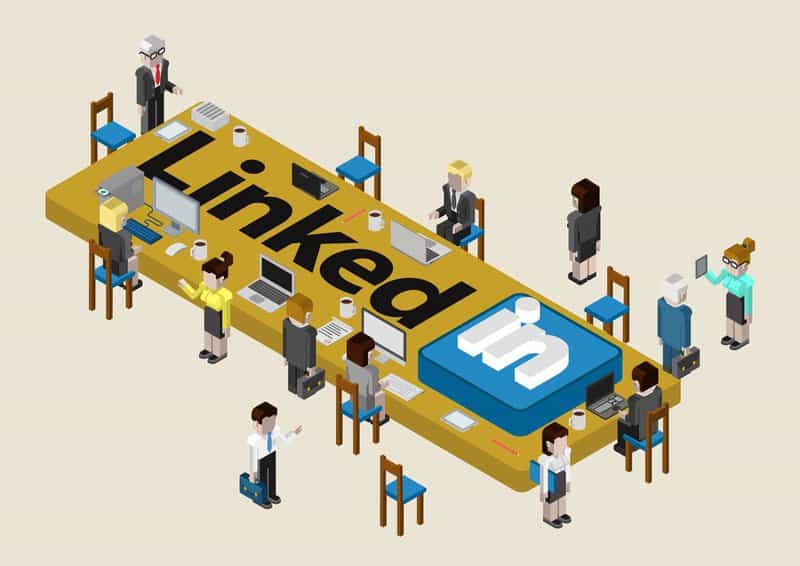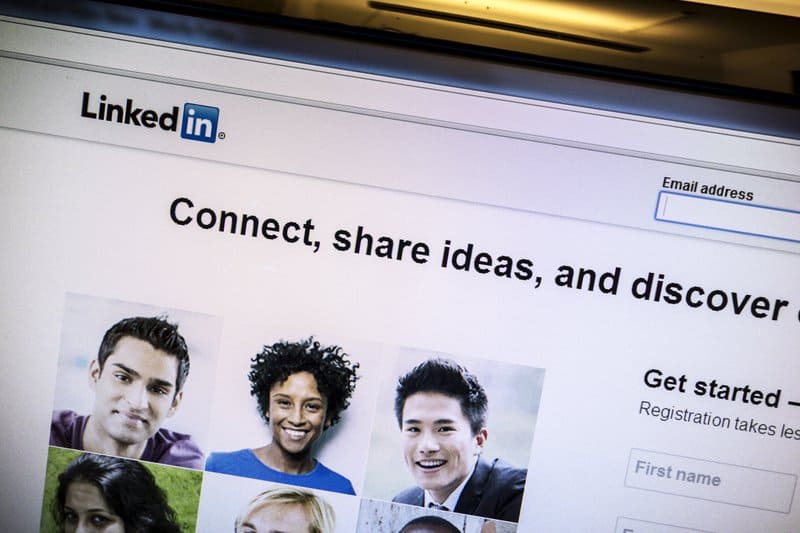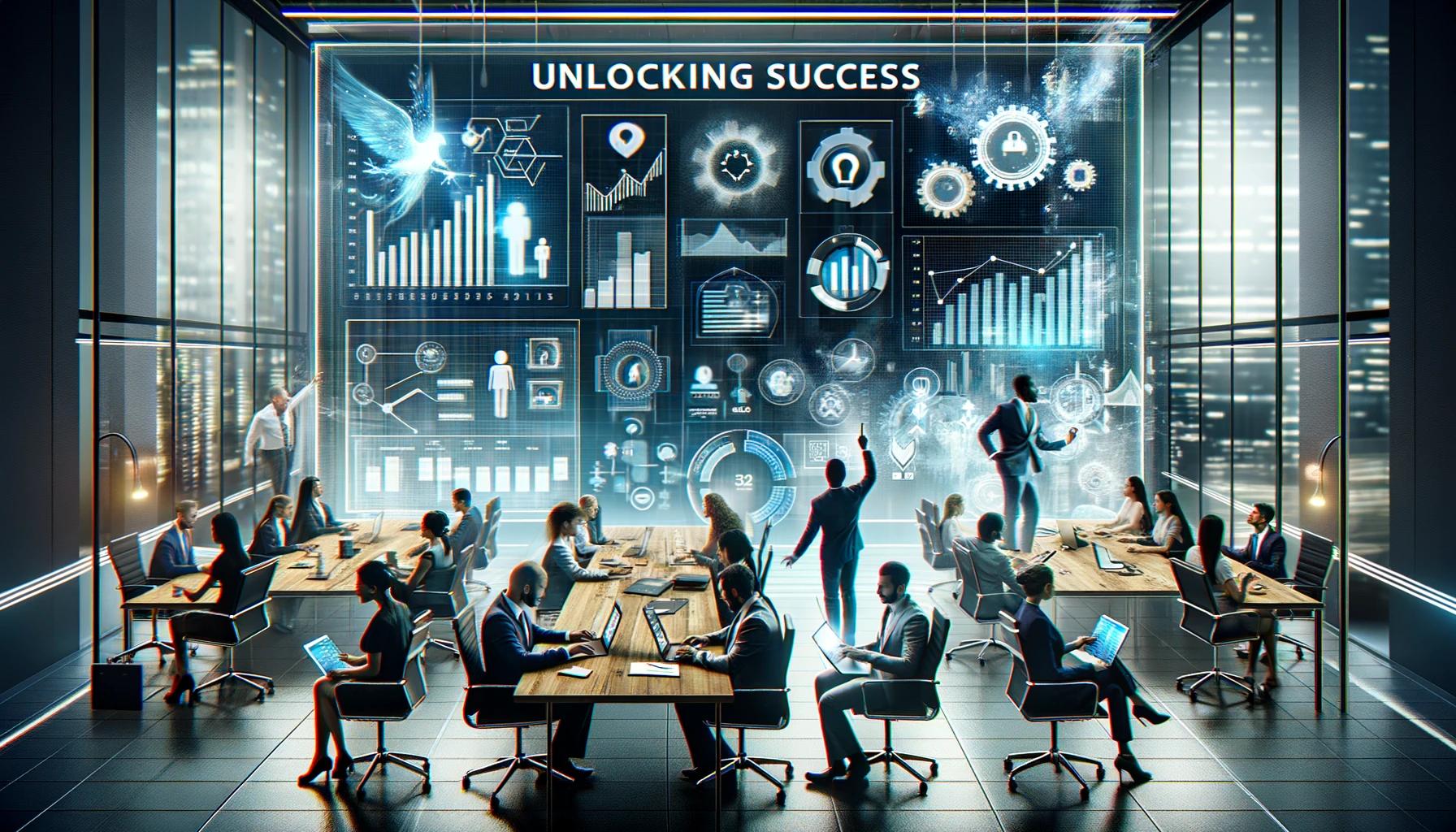How to Leverage LinkedIn to Network your Business
Technology is making our lives easier. From education to childcare and even sleeping, apps are solving problems and changing our daily habits. Networking is no different. In the same way, Facebook changed how we connect with friends, LinkedIn is slowly changing the way we approach nurturing our business networks. It's therefore now time to leverage LinkedIn to work for your business!
6 LinkedIn Stats that will blow your mind
If you're in business, you've no doubt got a LinkedIn profile (here's mine – would love to connect) or at very least heard of the professional networking platform. However, you may not give Linkedin the love you should have. If that's the case, here are some stats that will blow your mind and no doubt convince you to change your approach:
1. There are now over 660 million users on LinkedIn's professional network, spanning across more than 200 countries;
2. Every month more than 260 million users log in to LinkedIn;
3. LinkedIn is home to over 30 million companies;
4. 40 million users are in decision-making positions;
5. Content has gained over 9 billion impressions;
6. 94% of B2B content marketers say that LinkedIn is their preferred medium for content posts.
Why isn't everyone leveraging LinkedIn for their Networking?
The stats speak for themselves. LinkedIn is here to stay. It may not have blown up in quite the same way like Facebook, Twitter or even Tik Tok but unlike those other platforms, it has significantly less competition. Right now there is no other true professional networking platform. Facebook probably comes closest but in truth, businesses are a second thought for Zuckerberg and his team.
That begs the question: why doesn't everyone consistently spend time and their marketing budgets on LinkedIn?
1. The outdated view that social media is not for business
To be perfectly honest, LinkedIn wasn't taken seriously for a while. Many users initially treated it as just another social network. As a result, business influencers didn't really give it the time of day.
Serious businessmen and women didn't want to log in and see funny cat videos on LinkedIn. This type of social media is not conducive to posting business content and adding value to your network. Therefore it took a while for true business users to work out how to get the platform to work for themselves and their business.
However, things have changed. High powered entrepreneurs and business owners are now leveraging the platform (and have been for some time). It's just a matter of convincing the laggards that LinkedIn isn't just another social platform, it's for true professionals. It's time that all company owners and decision-makers start to leverage LinkedIn for their businesses.
2. Some don't see the value in leveraging LinkedIn
LinkedIn is like any business tool. It works for some companies better than others. To start using LinkedIn, you need to see value in spending your time on the platform. What's more, you need to get a better ROI from LinkedIn than those other channels or tools that are already working for your business.
I'm of the opinion that if it ain't broke then don't fix it. If you have marketing channels that are binging you in big business and you manage your networks effectively offline, stick to what's working. I'm sure you will eventually find your way to LinkedIn because business is fluid. We often have to pivot to keep expanding. However, until then, stick to what you know.
3. Others just don't know how to make LinkedIn work for their business
The vast majority of businesspeople that I come into contact with will fall into this category. They usually have a basic profile, probably have a few hundred connections and will get & accept connection requests every now and then. Further from that, however, they just don't know how to leverage Linkedin for their business.
If this is you, have no fear! It's actually very easy to take your LinkedIn strategy to the next stage with minimal time or monetary spending. I'm not saying you can become a LinkedIn influencer with little to no effort but you can be doing a little bit more and getting a return for these efforts.
LinkedIn Basics

You won't be surprised to learn that the best place to start is with core content: your personal profile and company pages. Think of it like your website, business card or just generally first impressions. The better they look, the better you look.
Linkedin Profile Tips
Let's start with your personal profile. There are a few fundamentals that need to be ticked off to ensure that your profile is going to give the best possible impressions of you as a professional:
Upload a professional Photo
This is critical. Anyone that skips this step is going to miss out on 14X the profile views and connections compared to someone who's uploaded a headshot. On that note, stick to a photo of you rather than your company logo. There are so many places to put your branding. For this, you need to be seen as a real human.
You shouldn't be using anything from Facebook. It has to be a professional headshot, preferably showing you as you typically do business. If you wear a suit during your day to day, then have that in your profile. If you're more casual then that's fine, just make sure it's "smart casual". You need to look the part!
Whatever you upload, ensure that the photo is sharp. Blurred photos look very unprofessional!
Use an eye-catching Cover Photo
This is your first opportunity to add a bit of branding. Personally I have kept mine simple, with a quick slogan: "Bringing Tech Ideas to Life", which is in line with my company's main offering, building and launching apps.
However, if you're in design, I'd expect you to illustrate that. Come up with a banner that looks great and illustrates your skills.
I will also say that in this day and age, there is no excuse for not having something custom designed. There are so many great services that you can use to get something designed for free or cheap. If you're drawing a blank you could try:
- One of Canva's templates;
- A very affordable designer from Fiverr.
Utilise the full Profile Title space allotted
The Title is where you describe what you do or what you are looking for. It's usually the first thing people look at when searching or considering whether to accept your request.
One tip: don't be too spammy. I wouldn't personally add a load of emojis because it gives off an unprofessional vibe. I would also be careful about how you pose your services. If you lead with something like "Sales Coach", anyone who receives a connection request will assume the first thing you will do is "sell".
You do want to use as much of the space as you can. Extra info here seems to be beneficial! So here's a quick pro-tip: while the desktop version of LinkedIn doesn’t allow you to extend your profile title beyond 120 characters, you can add up to 220 characters in the mobile version.
Customize your LinkedIn URL
By default, LinkedIn adds a random key of letters, numbers, and symbols after your name so make sure you update this. Personally I just kept it as my name but I have noticed others successfully use it to describe what they do.
Write an interesting & relevant summary
I've played a lot with this. Usually, to make life easy, people copy and paste what they have in their CV (ensuring it's in the first person). I have utilised a bit more of the space and tried to describe my "why" behind everything that I do.
No matter whether you go with full details or not, the first few lines are the most important. Make sure at a glance anyone knows what you do because the full detail may well be hidden.
Add "Providing Services"
This is a relatively new addition. This is where you can leverage Linkedin to illustrate what services you provide. These could be linked to your business offering or just your area of expertise. It shows up in quite a prominent place on your public profile:

Notable mentions
Again this is a bit subjective but I think that the following three are not as "valuable" as the above but should probably be completed nonetheless.
- Describe your Experience – the current role is most important
- Add some Skills – start at 5 and go from there
- List your Education
I will caveat this by saying that if you are looking for a job then these become very important.
LinkedIn company page best practices
Ok, I am not going to give this as much emphasis because as it stands, operating under your personal profile is still much more effective. But one thing that I know for certain is that LinkedIn is slowly tailoring their algorithms to help promote business pages. Therefore it's good to get ahead of the curve and make sure your business page looks just as good as your personal page.
Here's what you need to do:
1. Upload your company logo and a good looking banner;

2. Link to your website;
3. Make sure at minimum your "About" section is filled out;
3. Consider telling any potential employees about your culture in the "life" section;
4. Add content! When you write a blog post on your website, add a post on your company's page.
LinkedIn Strategies for Businesses
Ok if you're still with us then kudos for reading this far. Now it's time to start working out how you'd like to leverage LinkedIn for your business. Here are the main strategies to consider.
Get sales for your business on LinkedIn
It's a great platform to get B2B sales, as long as your approach is to add value first. Tools like Sales Navigator allow you to target exactly your preferred customer profile. From there it's a matter of reaching out and requesting to connect.
What you need to understand is that LinkedIn users are getting used to a bit of spam. That means if you start selling in one of the first touchpoints (connection message or follow up), the likelihood is that you will be ignored or worse lose the connection.
It's becoming a bit of an art form but what you want to do is start a conversation through the messaging system, whilst at the same time adding value through insightful posting. Make sure you ask about them and their business because everyone likes to talk about themselves. Then progress this into a phone call or meeting. By that time the sale will come much easier.
Build your network using LinkedIn
Sometimes using LinkedIn is more about building your network than making a sale. This is often more tailored towards the entrepreneurs of the world. For them, it's about building a digital Rolodex of GREAT people. You could subsequently use this network for partnerships, to find investment or to aide others in your network with great referrals.
However, be sure to have a strategy here. It is not just about the numbers. It's about the geography and skillset of your potential network. Connections need to be diverse so don't just stick to people you know as LinkedIn suggests. Find those in overlapping industries, all around the world.
From there just as with the above strategy, add value and start conversations. When selling isn't your number 1 priority, you're likely to find better opportunities in the long run.
Nurture Referral Partnerships on LinkedIn

You can't beat a good referral partnership when it comes to growing your business. I'd say that LinkedIn is one of the best places to find a referral partner due to the way you can leverage the targeting of such tools like sales navigator.
If you're uncertain as to what a referral partner is: it's a business (or decision-maker in said business) that has the same clientele as yours but doesn't compete. In such a scenario, you build a reciprocal relationship, passing clients to each other. Here are some tips on how to build a great referral partnership.
Once you have developed a relationship, the platform is a fantastic means to pass on introductions, share knowledge and just generally keep in touch without the need of having to meet in person every couple of weeks. Again like all things in business, you should have a strategy and a way of managing any contacts. Key referral partners should be contacted regularly so set up reminders or add to a CRM system.
Become a professional influencer through LinkedIn
Finally, you can actually leverage LinkedIn to be a business all of its own. You do this by becoming an influencer in your field or industry. You grow your network to the maximum size LinkedIn allows. Then you keep on adding value.
When you do this, other people in your industry will seek you out. You will find a million different ways to monetise this. Most people do it by offering an educational, coaching or consulting service. You could also leverage other mediums at the same time as podcasting in for example.
How to make LinkedIn work for your Business?
Okay, so I am assuming that you have chosen a strategy (or two). Now it's time to have a look at the individual activities that you can do in order to leverage LinkedIn for your business.
Posting great Content
For me, everything revolves around posting. Obviously you need to have a network to view comments and engage with your posts. However, this is where you add real value. This is where you stay front of mind within your industry.
Have a test to see what works for you. I've tried text-only, video and image-based posts. They all work in different ways. It's a matter of having a strategy and understanding your target audience. If your target user responds better to video, then that's what you should concentrate on.
Generally speaking, if your posts are insightful and not too "salesy", then you are likely to succeed and get engagements. Then all you have to remember is that it's about touchpoints. If in a private conversation you try to sell your service and that particular person has seen the value that you've been adding through your posting, then you are much more likely to convert.
In the same vein, when you add real value, potential customers will start to seek you out. That's when Linkedin really start working for you and your business.
Optimise your posting
There is a certain amount of psychology to picking the optimum time to post. Most businesses on LinkedIn will be targeting a B2B vertical. In this case, you are looking at targeting professionals during the working week but not at the busiest times of the days. You are trying to catch them on downtimes:
- During the morning commute;
- In or around lunch;
- At the end of the working day.
CoSchedule performed studies on consumer behaviour across all social platforms. Trends indicated that the highest performing B2B posts happened on weekdays around these times:
- 8 am
- 10am-12pm
- 6 pm
Even more interestingly, Wednesday seems to be the highest performing day of the week.
You can become even more specific if you profile your target audience well. All in all, you should have a well thought out LinkedIn strategy. Everything you do and/or post should have ROI in mind.
Make Connections

This may seem obvious on the surface. However, the average user doesn't consistently seek out new connections. It's not just about connecting with the person you met over a coffee or at a networking event. It's about broadening your network with the right kind of people and contacting them directly from tools like sales navigator.
I create full campaign strategies when it comes to making connections. By this I mean I have a particular target in mind and unique content for each target. That means a fresh connection message and a follow-up that prompts further conversation. I might wait until after four or five successful touchpoints but there will be some sort of sale or pitch within this funnel.
As I mentioned above, I usually don't make a sale directly on LinkedIn (although I have done once or twice). Personally I think it cheapens the experience. What I aim to do is further the conversation so that we are talking over the phone or meeting up for a coffee. Once you are face-to-face the likelihood of converting is so much higher.
Join a Pod (or three)
One of the best pieces of advice that I can give when leveraging LinkedIn for your business, is to join a pod. These are communities of other avid LinkedIn uses that share content. Some have specific rules and others are more relaxed. Regardless, they are critical for getting your posts more engagements and increasing the likelihood that they will trend on particular hashtags.
I have found that diversity is best here. You should join a big one that has a lot of members but where the members don't necessarily always react to your posts. Then you should join a couple of small ones, where the engagements are much more specific. Here you should get fellow members to write detailed and relevant comments (and reciprocate). This can be very helpful in terms of the LinkedIn algorithm.
Make Introductions
To me, one of the biggest parts of networking is introductions. This starts with giving. When you have highlighted a potential referral partner, you should try and add value when you can. If you can introduce a potential client, then you are likely to get something similar in return.
The platform itself makes it very easy to facilitate these introductions. Not only can you use filters within your own connections to find the perfect referral. You can facilitate the actual introduction very easily using a group message.
Request Introductions
When you have a close relationship with someone on LinkedIn, often they will suggest that you have a look through their contacts to see whether there are any potential introductions you'd like them to make. You could even do this off the cuff if you're brave. Either way its a highly effective and low energy way to be introduced to potential clients or referral partners.
Request Recommendations
Make sure you utilise LinkedIn's recommendations, which are essentially like testimonials. Get as many of these as you can because they will serve as social proof that you are good at what you do. Remember that you don't just have to rely on client testimonials, it's sometimes great to get ones from referral partners.
Give Value
I just want to reiterate this point here. No matter what you do or what your strategy is, you need to add value. If you do that on this platform you will receive benefits in return, hopefully in the form of new clients or partners.
Use a VA
With everything that I have suggested above, it may well be too much for one person to handle. Hiring a virtual assistant can be extremely useful. I personally have mine help me with some of the more mundane tasks on LinkedIn. She also reviews my messages to ensure that I never miss anything important.
Leveraging LinkedIn during Networking Events
I just want to quickly bridge the gap between in-person networking events and LinkedIn. Some of the old-guard may think that the two don't go together. However, in my experience, you can 100% leverage LinkedIn for your business networking events.
Firstly you do this by using some of the tools that LinkedIn makes available to you. For example, within the app, there is an ability to find nearby and QR scan function. This allows you to quickly and easily connect with other LinkedIn users. It's particularly handy if you don't have a business card or are prone to losing those that are given to you.
I also find that it is a fantastic tool to follow up with those people that you meet during these events. Most people don't want to be inundated by emails and one meeting may be too soon for a phone call. Therefore a quick LinkedIn message to say how great it was to meet them, is a fantastic way to get a conversation started.
Plus it should be mentioned that most people go to networking events to find referrals. In this case (as mentioned above), Linkedin servs as a fantastic tool to make and receive referrals.
How to run Networking Events using LinkedIn
Finally, I want to quickly mention a new tool that LinkedIn has recently released. You can now create events directly within the platform:

It does still need some finessing but if you have a big network this is a great way to get the word out. You do this by directly inviting individuals within your network to your event. These invitations subsequently show up in the same place as connection requests.
I suggest creating an event, inviting 100+ potential attendees from your network and then creating a post to publicise the event (provided it's public). This seems to be very effective, particularly since the tool is still so new.
Final thoughts on Leveraging Linkedin for you Business
If you are a business owner or decision-maker, you need to have a profile on LinkedIn. It's a fantastic tool to be used on its own or in conjunction with other activities such as networking. The above is really just a starting point and when you get used to the platform you will come up with your own strategies.
If you'd like to connect on LinkedIn, here's a link to my profile:
https://www.linkedin.com/in/james-killick/
I'd be very happy to start a conversation with you…
Latest Blogs

May 2, 2024
Unlocking Success in Tech Project Management: Essentials for Entrepreneurs
If you're an entrepreneur or executive, mulling over how to manage your tech projects with efficiency, this article is for you. Peek into the world of successful tech project management, exploring effective project planning techniques and agile project management strategies. We’ll guide you on how to navigate project milestone tracking methods and bolster productivity with collaborative team communication tools.

April 26, 2024
Understanding the Core Principles of User-Centered Design – A Guide for Entrepreneurs
Unlock success with the principles of user-centered design. Bringing together elements of empathetic, human-centered concepts and user interface principles, this strategy ensures digital products align with actual user needs and desires.

April 23, 2024
Master Effective Debugging Techniques: Tips & Tools for Software Developers
You've got a tricky application behaviour that's not making any sense, and you're stuck again? Today we tackle one of the most challenging aspects of programming - debugging. In this piece, we focus on effective debugging techniques, offering insight into software debugging methods and debugging best practices.

